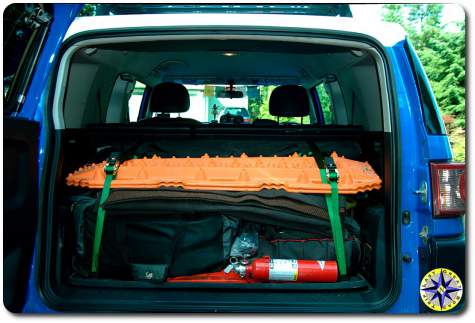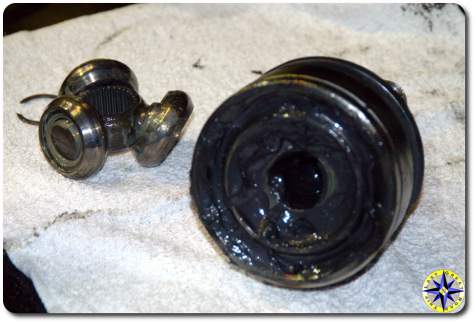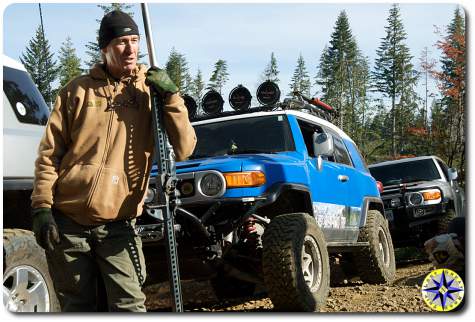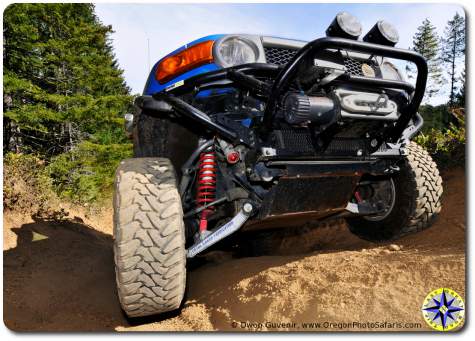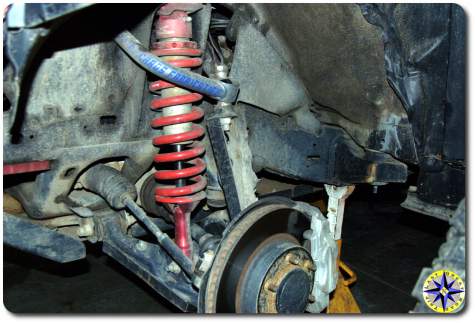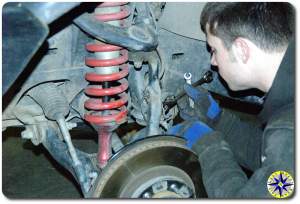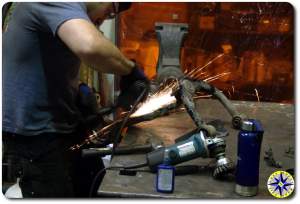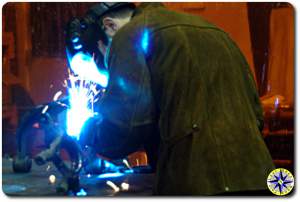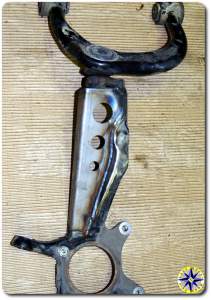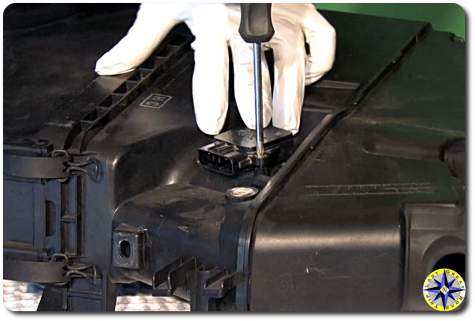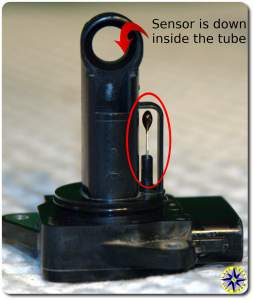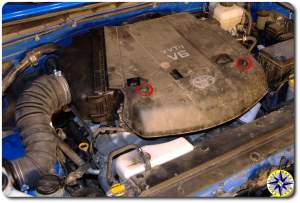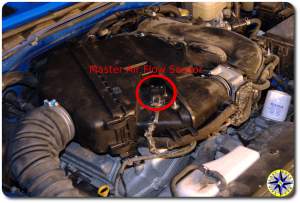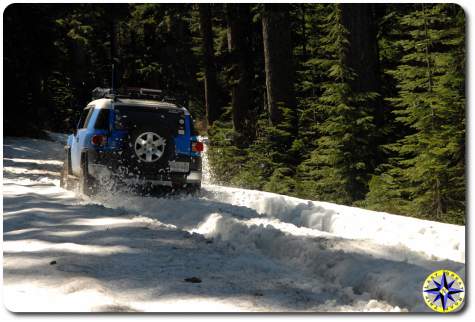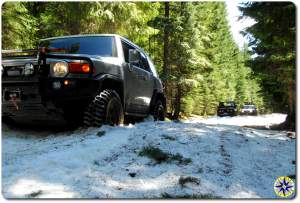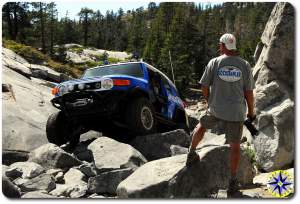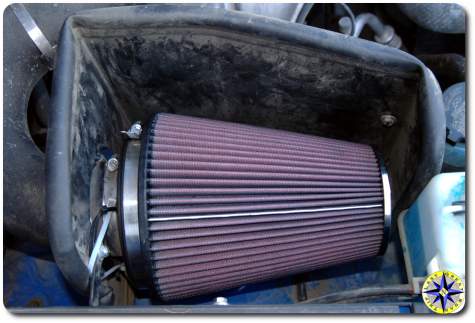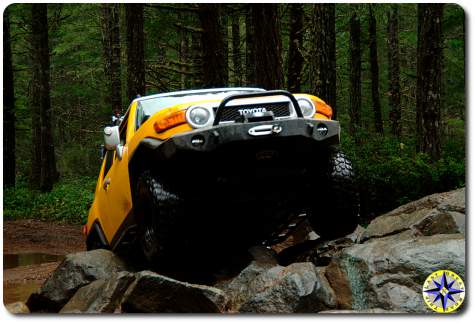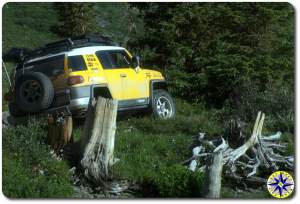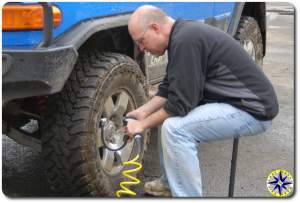 As I’m getting ready for the next off-road adventure it occurred to me there are certain things I wont go without. Some of these are practical, some are personal but for me these things make all the difference in the world when it comes to dealing with issues I may encounter and adding to the fun.
As I’m getting ready for the next off-road adventure it occurred to me there are certain things I wont go without. Some of these are practical, some are personal but for me these things make all the difference in the world when it comes to dealing with issues I may encounter and adding to the fun.
- First on the list, my head! Don’t go Freud on me here. A big part of my preparation for even a little off-road adventure is to wrap my head around what I’m going to be doing. I’ll review the maps, run through my mental checklists, and consider the situations I may run into. This includes thinking about the things that could go wrong. Since I often go out alone I know that I wont have the perfect piece of equipment for every situation and getting out of a jam is going to be up to me. This is why I always make sure one person knows where I’m going, when I’ll be back and what to do if I’m late. Being in the right frame of mind makes all the difference to me and helps ensure I enjoy the adventure no matter what happens out there.
- A big part of these off-road adventure trips is capturing and sharing the adventure with others. I always grab the photo and video equipment including the tripod, microphones, lenses, extra batteries, chargers and video tapes. All this equipment takes up space and it becomes a trade off with what other stuff I’ll leave at home (see #9). But when I get a comment telling me how much someone enjoyed the story, pictures or video it brings it all home for why I do what I do.
- Water. Lots of water! Way back in the day, I was out on a long hike and did not bring enough water. The migraine and weakness of dehydration I experienced was enough to ensure I would never run out again. I carry plenty of fat reserves around my waist to go without food for longer than I would like. In fact a cleansing fast would do me good. But water is an absolute must.
- New to the list is my iPhone. Not that I count on cell coverage, but with all the apps. available these days I find the chance to play Texas Holdem or listen to a few songs can be relaxing after a long day on the trail or on a lunch break. There is even a little app that turns your iPhone into a level that can be handy when trying to make sure the rig or camera isn’t listing to one side.
- Of course I have my recovery gear. This includes tree savers, snatch blocks, yank straps, shackles, shovel and hi-lift jack. I’ve also added a new item, Maxtrax recovery system that makes for easy sand recovery. I’ve seldom had to use the recovery gear on the trail, but I often pull it out to practice and check that all the equipment is working correctly.
- My tool kit is basic but has what it takes: box wrenches, sockets, pliers, box cutter, wires, fuses, crescent wrenches, screwdrivers, zip ties, duct tape, mallet and other bits. I grew up working on Baja bugs where there was nothing you couldn’t fix with a screwdriver and a big hammer. I also count the air compressor as a mandatory tool for airing up and down as we travel between tarmac and dirt.
- A fold up stool… Yes that is right a fold up stool. My brother-in-law gave me this little gem a couple of years ago and I did not fully appreciate what a great gift it was at the time. Every time I’m bent over airing up, peering into the front hub or checking the brakes I thank Mickey for the support!
- I have a bucket of fluid bottles in the back just in case something starts to leak or runs low. Although I do a thorough pre-run check (daily on long trips) the fluids include motor, transmission and gear oil, coolant, brake, steering and windshield.
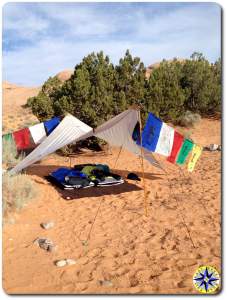 In the overnight gear department, I’ve attained a Zen like minimalist approach reducing the cooking, sleeping and living gear to what fits in a small bucket. A bivy sack and tarp replaces the tent, a tea kettle, a small pot,that doubles as a cup, a second cup (it all fits inside itself), a compact stove that puts out enough BTU’s to contribute to global warming, a spoon, head lamp w/ extra batteries, fire starter, fuel and small repair kit. There is also a hand full of nuts, chicken broth base and enough green tea to relax in the evening as well as get started in the morning. The grocery list may increase on long trips, but really that is about it for an overnight adventure.
In the overnight gear department, I’ve attained a Zen like minimalist approach reducing the cooking, sleeping and living gear to what fits in a small bucket. A bivy sack and tarp replaces the tent, a tea kettle, a small pot,that doubles as a cup, a second cup (it all fits inside itself), a compact stove that puts out enough BTU’s to contribute to global warming, a spoon, head lamp w/ extra batteries, fire starter, fuel and small repair kit. There is also a hand full of nuts, chicken broth base and enough green tea to relax in the evening as well as get started in the morning. The grocery list may increase on long trips, but really that is about it for an overnight adventure.- I don’t always know when I’ll get to go on an off-road adventure. Sometimes it comes down to grabbing the gear and go. This means all the gear needs to be packed and ready… Always ready. All the gear is stored in a few canvas tote bags. Each bag with its own category of gear. The last bag is filled with the miscellaneous stuff that falls under the “just in case” title. Here you’ll find a first aid kit, work gloves, jumper cables, wool blanket, tarp, duct tape, flash light, bungees, parachute cord, and a pair of coveralls. I dipped into this bag a number of times helping others out of a jam including jump starts and the donation of a bungee cord to keep tension on another rigs tire chains.
- I know I said ten things… and this is eleven… this one is my confession of what I don’t carry that I should. Spare parts! It is hard to predict what is going to break but there are some basics I still have to build a kit around. Starting this week I’m building up my parts kit to include: Axle shaft (IFS is a weak point and no one will have one that fits… remember the TC long travel build), belts, hoses, nuts, bolts and …. Your ideas are welcome and encouraged. What parts do you carry?
This is my top ten and for me it works. I don’t expect that it will work with anyone else but I hope it will encourage you to think about what you need to be prepared and enjoy your adventures. Leave your recommendations and help everyone including me build a better kit.

